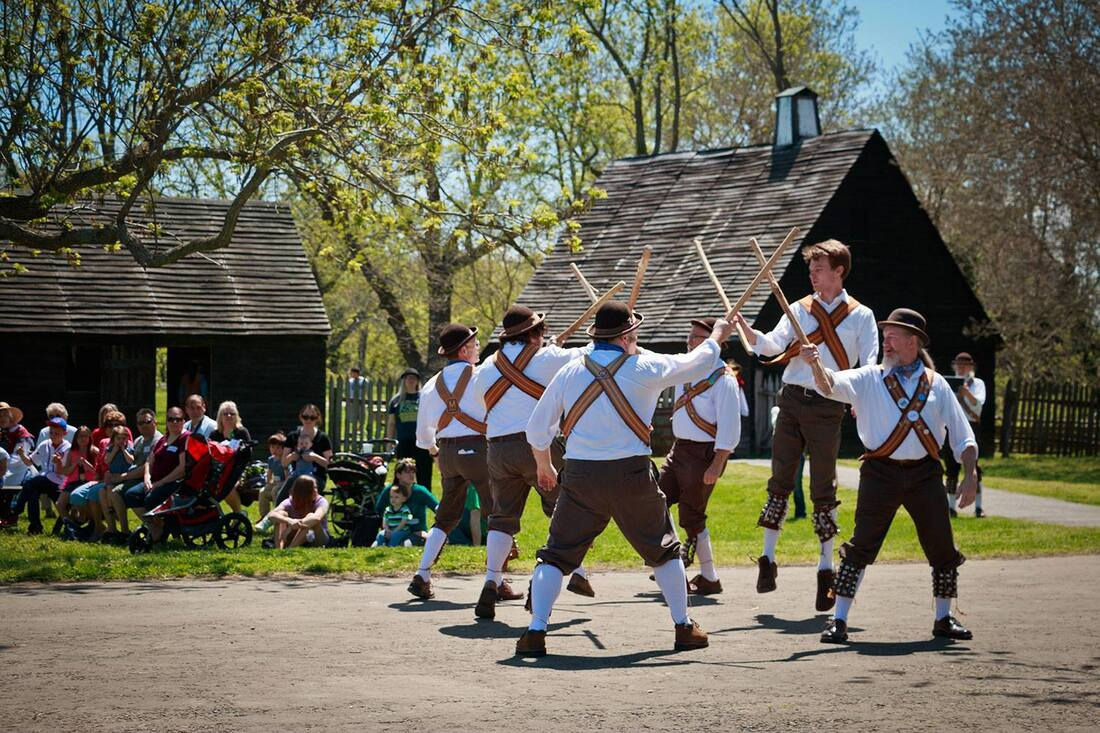
Town Center
Town Center at HSMC allows visitors to learn of the legacies of early Maryland and the contributions to our state and national heritage. Learn about the social, political, economic, and physical structure of Maryland's first capital.
Take in the view from the direct center of town, where the roads between the State House and Brick Chapel meet.

St Mary's City was a community built following a baroque plan. With doors one-half mile apart, the Chapel stands on a slight knoll at one end of town, with the doors to the State House on a river bluff at the other end. At the intersection of roads forming two triangles, lays the center of town.
VISITOR EXHIBITS
Life in Town Center
MPT series "The Dig" examines commerce in the MD colony (opens in a new window).
William Nuthead was the first printer in Maryland. He printed many types of government documents such as legal contracts. Few people could read or write in the colony, so newspapers were not produced in St. Mary’s City in the 1600s. His wife, Dinah, assisted William. Following his death and the relocation of the capital, Dina moved to Annapolis and continued the business there, becoming one of the first women to run a printing press in America.
VISITOR EXHIBITS
Lecture
HSMC is no stranger to the consequences of witchcraft. Only two people were ever tried for withcraft in MD; both in the statehouse at St. Mary's City . Of these two, one woman was sentenced to death: Rebecca Fowler. Many people believed in witches and hexes, enough that they would seek ways to protect themselves and their families. Though they have almost faded into obscurity, witch bottles were, the leading folk magic devices to handle a vengeful witch or enemy. Only eight such protective vessels have been identified in the United States, including in Maryland and Virginia. Join Amanda Wells and HSMC to see how these bottles could stop a witch from harming you and their connection to Early America.
Read more about witch bottles in our blog, Clues to Early Maryland, #8 "Buried Bottles"
VISITOR EXHIBITS
Behind the Scenes
DJ Lavery, Site Supervisor of the Town Center at Historic St. Mary's City, shows us a little of what goes on behind the scenes when the museum is closed, with a flintlock musket demonstration and discussion.
VISITOR EXHIBITS
The Reconstructed State House

The original State House building was completed in 1676 and became the home for the Provincial government in Maryland. Prior to its construction, the Assembly met in many different buildings including St. John's. The current structure was built in 1934, as part of the Tercentennial celebration and is located 50 yards southeast of where the original State House sat.
MPT Series "The Dig" and Dr. Henry Miller discuss how the legislative body operated in early MD. Hear the story of Mathias De Sousa: the first African American to participate in Maryland government. (Opens in a new window)













